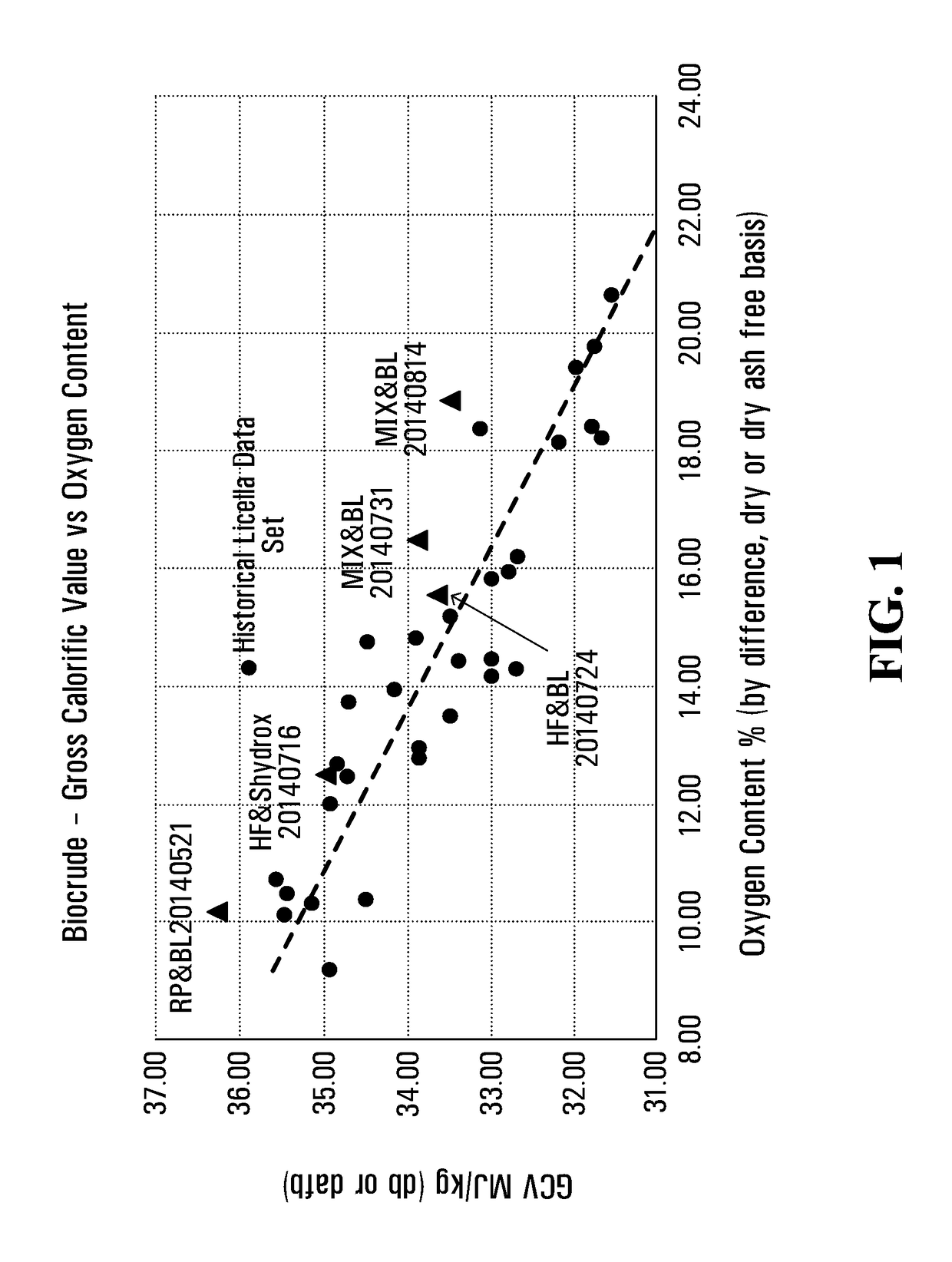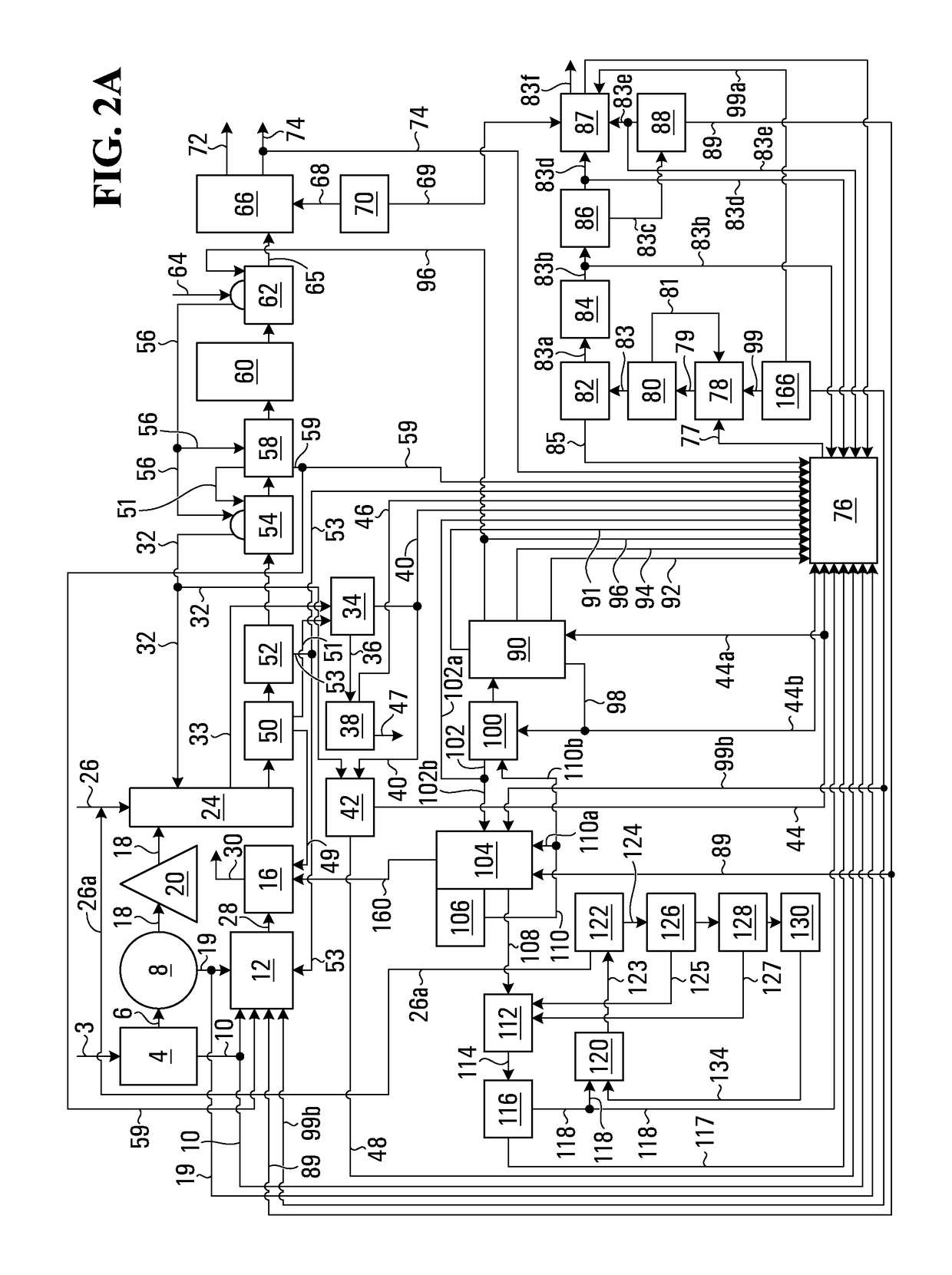Integrated kraft pulp mill and thermochemical conversion system
a technology of thermochemical conversion and kraft pulp mill, which is applied in the field of bioproduct generation, can solve the problems of declining conventional petroleum reserves, increasing global energy demand, and reducing the availability of conventional petroleum, so as to improve existing bio-oil production methods, improve process efficiency, and improve product characteristics
- Summary
- Abstract
- Description
- Claims
- Application Information
AI Technical Summary
Benefits of technology
Problems solved by technology
Method used
Image
Examples
example 1
Materials and Methods
[0303]Australian Radiata pine was run with black liquor to establish the catalytic action of black liquor and suitable operating temperatures. In the same manner, hog fuel trials were run alternately using sodium hydroxide and then with black liquor. Finally, mixed feedstocks containing hog fuel, SPF wood chip, and paper sludge were processed with black liquor.
[0304]Pre-processing trials were conducted on the feedstocks to prepare them to specifications of the small pilot plant (SPP). Dry-milling of the feedstocks followed by Cat-HTR processing in the small pilot plant led to successful production of bio-crude (bio-oil) from the feedstocks, in particular from a mixture of hog fuel, SPF wood chip, sludge and black liquor.
[0305]The resulting bio-crudes had gross calorific values (GCV) on a dry ash free basis in the range of 33-36 MJ / kg. For comparison, diesel fuel has a GCV (or energy content) of about 45 MJ / kg and unprocessed dry wood about 18-21 MJ / kg. Licella h...
example 2
Results
[0332]
TABLE 4Feedstock Analysis ResultsSpruceRadiataPineBlackPineFirHogfuelLiquorProximate AnalysisMoisture5.743.860.053.9(% wt ar)Ash0.60.62.247.1(% wt db)Volatiles79.879.579.4(% wt db)Fixed C.19.719.923.5(% wt db)Ultimate AnalysisGCV20.818.6(MJ / kg db)GCV21.018.7(MJ / kg daf)Carbon52.352.152.937.5(% wt db)Hydrogen6.26.36.01.7(% wt db)Nitrogen0.060.210.25(% wt db)Sulphur0.010.010.024.77(% wt db)Oxygen40.840.838.73.2(% wt db)Chlorine0.21(%)Molar1.40.04H / C RatioAsh ConstituentsSiO22.31.1(% oxide in ash)(% wt db)Al2O31.10.62(% wt db)Fe2O30.690.28(% wt db)TiO20.040.02(% wt db)K2O16.37.6(% wt db)MgO7.93.2(% wt db)Na2O0.420.3(% wt db)CaO33.946.7(% wt db)SO31.21(% wt db)P2O52.22.5(% wt db)Mn3O42.31.5(% wt db)SrO0.120.24(% wt db)BaO0.30.6(% wt db)ZnO0.280.42(% wt db)CuO (% wt0.20.06db)Cr2O30.040(% wt db)Co3O400(% wt db)NiO0.020(% wt db)V2O500(% wt db)
Comparison of Feedstocks
[0333]Radiata Pine wood flour was used as a benchmark feedstock for biomass Cat-HTR. The SPF woodchip is unsurpri...
example 3
Discussion
Bio-Crude Quality
[0382]Bio-crude quality is most readily assessed in the first instance by means of its Gross Calorific Value (GCV). This is the gross energy contained in the material and is closely related to the oxygen and hydrogen content of the bio-crude. For Radiata pine wood flour with sodium hydroxide catalyst on the SPP, typical GCV of bio-crude is in the range 34-36 MJ / kg dry basis.
[0383]The Radiata pine wood flour bio-crude has a low ash content, and therefore dry basis values are similar to dry ash free basis (daf) values. The bio-crudes from hog fuel and black liquor feedstocks have significantly higher ash values, and it is more appropriate to compare these on a daf basis.
[0384]In FIG. 1 the GCV on a daf basis is plotted against oxygen content for Bio-crudes prepared in this project and for a historical series of Licella bio-crudes (dry basis) from Radiata Pine. The oxygen content is determined by difference from the ultimate analysis as [100-% C-% H-% S -% N]...
PUM
| Property | Measurement | Unit |
|---|---|---|
| temperatures | aaaaa | aaaaa |
| temperatures | aaaaa | aaaaa |
| pressure | aaaaa | aaaaa |
Abstract
Description
Claims
Application Information
 Login to View More
Login to View More - R&D
- Intellectual Property
- Life Sciences
- Materials
- Tech Scout
- Unparalleled Data Quality
- Higher Quality Content
- 60% Fewer Hallucinations
Browse by: Latest US Patents, China's latest patents, Technical Efficacy Thesaurus, Application Domain, Technology Topic, Popular Technical Reports.
© 2025 PatSnap. All rights reserved.Legal|Privacy policy|Modern Slavery Act Transparency Statement|Sitemap|About US| Contact US: help@patsnap.com



